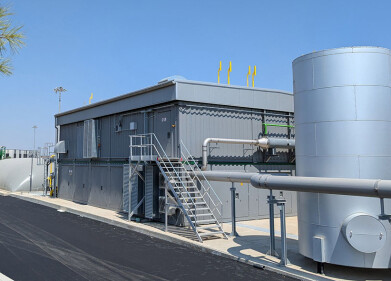Air clean up
Higher EU Greenhouse Gas Emissions due to Economic Recovery and Cold Winter
Jun 06 2012
Greenhouse gas emissions increased in 2010, as a result of both economic recovery in many countries after the 2009 recession and a colder winter. Nonetheless, emissions growth was somewhat contained by continued strong growth in renewable energy sources. These figures from the greenhouse gas inventory published by the European Environment Agency (EEA) today confirm earlier EEA estimates.
Greenhouse gas (GHG) emissions of the 27 Member States of the European Union (EU-27) increased by 2.4 % (or 111 million tonnes CO2 equivalent) between 2009 and 2010. This can be partially explained by the fact that there was a sharp 7.3% (or -365 million tonnes) decrease of emissions between 2008 and 2009.
The EU remains fully on track to meet its Kyoto target. The long-term reduction trend continued, since EU-27 greenhouse gas emissions still remained 15.4 % below 1990 levels in 2010. Emissions in the 15 Member States with a common commitment under the Kyoto Protocol (EU-15) in 2010 were 11 % below the Kyoto Protocol base year. These consolidated figures confirm earlier estimates for the EU, published by the EEA in October 2011.
“Emissions increased in 2010. This rebound effect was expected as most of Europe came out of recession,” EEA Executive Director Jacqueline McGlade said. “However, the increase could have been even higher without the fast expansion of renewable energy generation in the EU.”
Higher emissions were partly due to the economic recovery (GDP grew by 2 % in the EU in 2010), as many European countries emerged from the 2009 recession. Higher final energy demand (+3.7 % in 2010) also contributed to the emissions growth. Moreover, the winter in 2010 was colder than in the previous year, leading to higher heating demand.
However, GHG emissions growth was contained by several factors. As in previous years the growth in the use of renewable energy sources continued in 2010 with a 12.7% increase of total consumption of energy from renewable sources. In addition, gas prices fell markedly in 2010 and EU total consumption of gas used for energy purposes went up by 7.4%. The higher share of gas led to an improved carbon intensity of fossil fuel consumption in many Member States.
Emissions were higher in most of the key sectors in 2010, particularly those sectors relying on fossil-fuel combustion. Sectors with the highest GHG emissions growth included: CO2 emissions from residential and commercial sectors (caused by a higher heating demand due to a colder winter); CO2 emissions from manufacturing industries and construction (including iron and steel process emissions); and CO2 emissions from public heat and electricity production.
Road transport emissions continued to fall in 2010, despite more demand for freight transport.
Higher industrial activity during 2010, after the economic contraction in 2009, appears to have led to higher final energy demand and related emissions in those sectors covered by the EU emissions trading scheme (EU ETS) compared to other sectors.
Among the greenhouse gases reported to the United Nations Framework Convention for Climate Change (UNFCCC), carbon dioxide (CO2) accounted for the largest increase in emissions in 2010. The gas represented 82 % of total EU GHG emissions.
Industry emissions of hydroflourocarbons (HFCs), extremely potent GHGs, grew significantly in 2010, continuing the upward trend observed since 1990.
Methane (8.6 % of total EU GHG emissions in CO2 equivalent) and nitrous oxide (7.2 %) declined.
Germany, Poland and the United Kingdom accounted for 56% of the EU’s total net increase in GHG emissions. The relative growth in emissions was highest in Estonia, Finland, Sweden and Latvia. Spain, Greece and Portugal again reported lower GHG emissions in 2010.
The most recent data available for the EU GHG inventory is for 2010. Verified 2011 emissions from the EU ETS point to a 2 % emissions decrease over the course of the year. In 2011 the EU ETS covered more than 12,000 power plants and manufacturing installations in the EU-27, Norway and Liechtenstein.
Events
Jul 23 2025 Sydney, Australia
Aug 24 2025 Stockholm, Sweden and online
Aug 27 2025 Busan, South Korea
Sep 02 2025 Mexico City, Mexico
Sep 02 2025 Mexico City, Mexico














